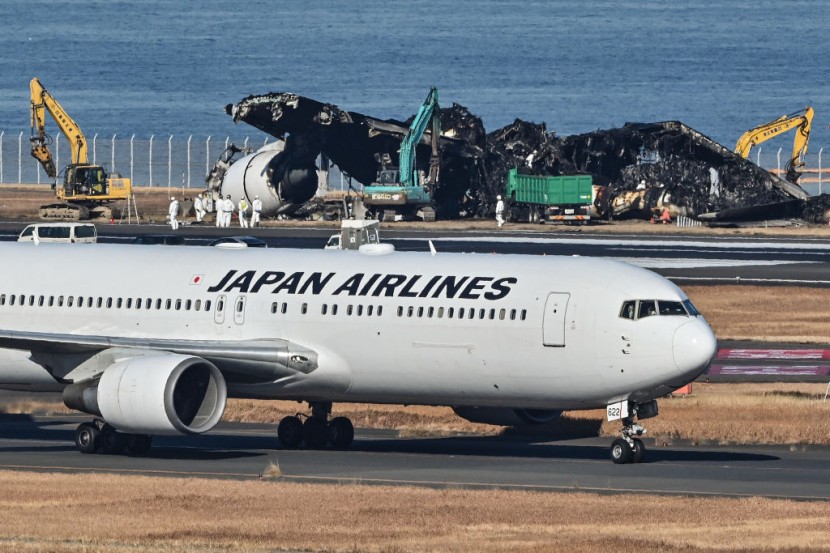Japan Airlines' recent fatal collision at Tokyo's Haneda Airport, where a passenger jet collided with a coast guard aircraft, resulting in five casualties, prompted the Japanese government to swiftly take action to enhance air traffic control protocols.
The incident, which occurred on January 2, prompted the transport ministry to announce emergency safety measures aimed at bolstering safety and restoring public confidence in aviation, as per Yahoo News.
Japan Takes Swift Actions For Air Travel Safety

Transport Minister Tetsuo Saito addressed the media on Tuesday, emphasizing the urgency of implementing permanent safety measures. He stated, "One of our biggest missions is to restore confidence in aviation as a mass transit system." The Ministry of Land, Infrastructure, Transport, and Tourism is set to launch comprehensive efforts to ensure safety and security in air travel.
Among the immediate reforms, Japan has temporarily suspended the use of terms such as "No. 1" in air traffic control instructions, opting for more precise phrases to avoid confusion. The move comes in response to the belief that a misunderstanding of the term "No. 1" may have contributed to the tragic collision.
Moreover, additional staff will be deployed at all air traffic control centers in Japan to monitor systems that alert about potential runway entry errors. This measure is designed to prevent situations where aircraft inadvertently enter runways, as seen in the recent incident at Haneda Airport.
To address communication issues, the transport ministry has mandated that airlines ensure aircraft crews confirm runway clearance before landing. In the case of the Japan Airlines jetliner involved in the collision, visual confirmation was hindered by nighttime conditions, according to Nikkei Asia.
Japan Ministry Forms Committee for Collision Investigation
To further investigate the causes of the collision and explore additional safety measures, the transport ministry is establishing a committee. The committee is expected to convene its first meeting next week and will focus on upgrades to systems informing both pilots and air traffic control about runway conditions.
The tragic incident claimed the lives of five out of six crew members aboard the Japan Coast Guard plane. The captain sustained serious injuries, while all 379 passengers and crew on the Japan Airlines plane managed to evacuate before the aircraft became engulfed in flames.
Japan Transport Safety Board is actively investigating the incident, acknowledging that much remains unclear. The government's swift announcement of safety measures reflects a commitment to address the immediate concerns and reassure the public about the safety of air travel.
The incident at Haneda Airport has also raised awareness globally about the risks associated with runway collisions. Experts caution that despite advancements in aviation safety, a combination of factors can contribute to accidents. The need for improved situational awareness technologies, both in communication and ground tracking, has been highlighted.
The aviation community remains vigilant in addressing potential runway incursions, emphasizing the severity of consequences and the importance of global collaboration to prevent such incidents. The investigation into the Haneda Airport collision is ongoing, with authorities examining communication records, pilot conversations, and a detailed examination of aircraft and airport systems expected in the coming days, Interaksyon reported.
Related Article : Magnitude 6 Earthquake Hits Japan Anew








